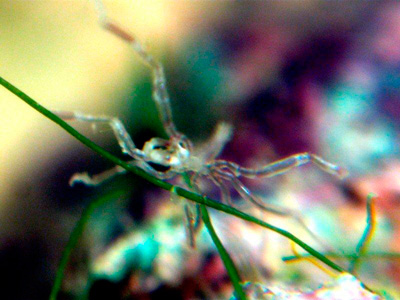Cuba’s Extraordinary Sea Spiders
Carlos Fraguela
 HAVANA TIMES — My keen interest in arachnids made me fall in love with the sea spider I discovered in my fish tank almost immediately. My instinct told me it was a type of spider, but it turns out I was wrong.
HAVANA TIMES — My keen interest in arachnids made me fall in love with the sea spider I discovered in my fish tank almost immediately. My instinct told me it was a type of spider, but it turns out I was wrong.
It was easy to find it in the encyclopedia (as they are popularly known as “sea spiders”). There are scientists who have classified them as highly differentiated arachnids, but I believe “pycnogonid” is a more accurate description. They belong to the Chelicerata sub-phylum and the Arthropod phylum (I’ve always liked classifying things systematically).
They are also known as panthopods. What I had identified as limbs, however, are referred to by the encyclopedia as “locomotive appendages”, and not gratuitously. The digestive tract and gonads of this ingenious animal ramify into these “legs”, a fact I didn’t know and find extremely interesting.
When they walk across the bottom of the fish tank, they do so very slowly. Sometimes, however, they let the currents move them and make swimming movements that are very funny. They move stealthily among seaweeds in search of planktonic preys or sweep the sea bottom in search of any organic matter they can eat.
One peculiar characteristic of pycnogonids is that, after the female releases her eggs and these are fertilized in the water by the male, she gathers them up and delivers these to the male, who cares for these until a late stage in their development. This also differentiates them from arachnids, among which the female is always responsible for caring for offspring.
Click on the thumbnails below to view all the photos in this gallery. On your PC or laptop, you can use the directional arrows on the keyboard to move within the gallery. On cell phones use the keys on the screen.











